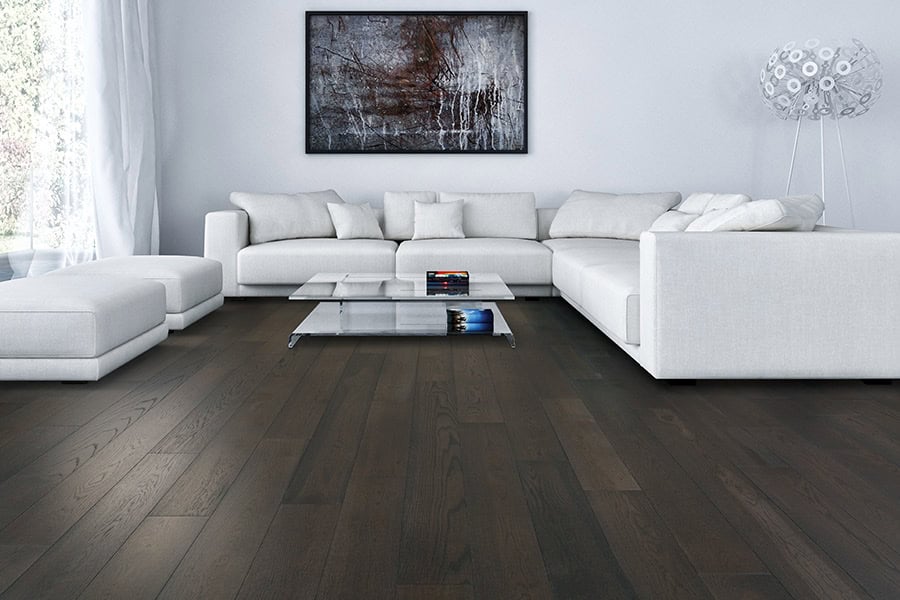Hardwood floors add timeless elegance and warmth to any home or office space. However, these beautiful surfaces can easily fall victim to various forms of wear and tear. Whether you’re moving furniture, hosting a party, or dealing with the daily hustle and bustle, there are numerous situations where your hardwood floors might need extra protection. In this article, we’ll explore different scenarios and provide valuable advice on how to protect your precious hardwood floors.

1. Furniture and Heavy Objects: Furniture Pads and Sliders
Moving furniture, particularly heavy pieces, can be a major source of scratches and scuffs on your hardwood floors. To prevent this, invest in furniture pads and sliders. Place these under the legs or corners of your furniture to create a smooth, protective barrier that allows for easy gliding, reducing the risk of damage.
2. High Heels and Pointed Shoes: Shoe-Free Zones
Stiletto heels and shoes with pointed heels can wreak havoc on hardwood floors, leaving dents and marks. Designate shoe-free zones in your home, especially in high-traffic areas like entryways and living rooms. Encourage guests to remove their shoes upon entering, and provide a designated area for footwear storage.
3. Pet Paw Patrol: Paw-Friendly Rugs
We love our furry friends, but their claws can be a menace to hardwood floors. Place pet-friendly rugs or mats in areas where your pets frequently walk or play. These rugs provide a comfortable spot for your pets and act as a protective barrier, preventing scratches.
4. Parties and Gatherings: Area Rugs and Temporary Flooring
Hosting a party or event can be a lot of fun, but it can also spell disaster for your hardwood floors. Consider using area rugs or temporary flooring options, like interlocking foam tiles, in high-traffic areas where guests will congregate. These solutions protect your floors from spills, scuffs, and heavy foot traffic.
5. Construction and Renovation: Plywood Sheets and Drop Cloths
During home renovations or construction projects, your hardwood floors are especially vulnerable to damage from tools, equipment, and debris. Protect your floors by placing plywood sheets or heavy-duty drop cloths in work areas and walkways. This not only shields your floors but also makes cleanup easier.
6. Moving Heavy Objects: Proper Lifting Techniques and Skudo Boards
When moving heavy objects, whether it’s furniture or appliances, use proper lifting techniques to avoid dragging them across the floor. Additionally, consider using Skudo boards, which are excellent for protecting against forklifts and heavy equipment but can also be employed in residential settings for moving large items. These boards provide a sturdy barrier between your floors and heavy objects, minimizing the risk of damage.
7. Daily Maintenance: Sweep and Mop with Care
Regular cleaning is essential for preserving the beauty of your hardwood floors. Use a soft-bristle broom or a vacuum with a hardwood floor attachment to remove dust, dirt, and debris. When mopping, use a damp (not wet) mop and a hardwood floor cleaner recommended by the manufacturer. Excessive moisture can lead to warping or damage, so be cautious with water usage.
8. Sun Exposure: Window Coverings and Area Rugs
Prolonged exposure to direct sunlight can cause your hardwood floors to fade or discolor over time. Install blinds, curtains, or UV-resistant window film to limit sun exposure during peak hours. Additionally, strategically placing area rugs or furniture in sunlit areas can help protect your floors from the sun’s harmful effects.
9. Regular Maintenance: Refinishing and Recoating
Over the years, even with the best preventive measures, your hardwood floors may show signs of wear. In such cases, consider refinishing or recoating them. These processes can breathe new life into your floors, removing scratches and restoring their original shine. Consult a professional for the best approach based on your floor’s condition.
10. DIY Repair Kits: Quick Fixes
For minor scratches and dings, DIY repair kits are available. These kits typically include touch-up markers, wax sticks, or putty that can fill in small imperfections. Keep one on hand for quick and easy fixes whenever you notice minor damage.
In conclusion, protecting your hardwood floors requires a combination of preventive measures, regular maintenance, and occasional repairs or refinishing. By taking proactive steps and being mindful of the potential hazards your floors face, you can ensure that your hardwood surfaces remain beautiful and durable for years to come. Whether you’re hosting a gathering, moving heavy objects, or just enjoying daily life, these tips will help keep your hardwood floors looking their best.














